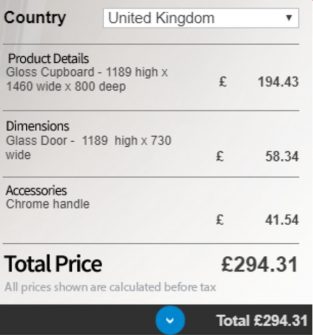DriveWorks CEO Glen Smith talks about embracing digital transformation and adopting change in a business in order to thrive
During this pandemic, there has been lots of change, but change isn’t always bad. Before this, how often did we show our appreciation for the NHS and key workers?
Now, we proudly stand on our doorsteps every Thursday and show them how important they are to us.
We’re travelling less, cutting our commutes and using that time more wisely.
Webinars, online learning and virtual meeting apps have all seen a huge rise. We’re spending time learning, improving and sharing.
In work and in our personal lives, we’ve all used technology more. Whether it’s doing an online food shop, attending a weekly team meeting, or participating in a virtual pub quiz with family and friends, now more than ever, technology connects the world.
It’s become clearer that companies that embrace change, adapt and move quickly are more likely to thrive.
There are some great examples: companies that previously supplied pubs and bars with beer have adapted as demand for those products declined and made hand sanitiser instead.
In the process, they’ve provided the country with much-needed supplies, made a difference and kept themselves afloat.
As CEO of a software company, I like to think of my team as champions for change. We’ve embraced digital transformation.
Almost everything we do is now digital, from the way we create licenses for our customers and manage purchase orders, to the way we book holiday time, submit our expenses and more.
Our digital processes and investments in technology have made transitioning to home working much smoother.
So many of our processes are controlled by our software, meaning our teams can be successful from anywhere.
No need for fear
Digital transformation is a term that confuses many business leaders. It can seem like a daunting and unachievable goal. But there’s no need for businesses to fear it.

Pandemic aside, the consumer world offers great examples of companies embracing digital transformation and thriving.
Disruptive companies such as Uber, Netflix, Just Eat and Nest, to name but a few, have built entire empires on taking a traditional concept and making it digital – and have been spectacularly successful as a result.
A business benefits from this kind of transformational thinking, and its customers do, too. Time and again, we see how companies that embrace digital can overtake their competitors and change the future for consumers.
In fact, digital transformation is not only a game-changer. It’s also easier than many think, because so many companies already have valuable data that can lead to transformational changes locked away in spreadsheets or in people’s heads.
The key to digital transformation is starting small, choosing one thing to improve, changing it, reaping the benefits and moving on to the next thing.
Eventually, the mundane is dealt with and your time can be focused on the things that really matter – innovation and people. People, after all, add a layer of value to experiences. We all want better experiences and technology is the answer.
Digital technologies simplify and improve experiences for everyone. Think about the lack of confidence you might have in a waiter who takes a large food order without making notes.
Now think about how much the experience is improved, when a waiter uses an electronic device to send your order straight to the kitchen, even while they’re still standing by your table.
The waiter can focus on adding value through making recommendations, offering advice and engaging in conversation. The plates arrive loaded to send your taste buds tingling.

Dynamic manufacturing
The same is true for the world of manufacturing, it seems to me. If you’re looking to buy furniture and are presented with a long list of product names and part numbers, the styles may not be what you’re looking for and standard sizes may not fit the space in your home.
In this all-too-familiar scenario, the likelihood is that you won’t place an order at all. Now think about how much better it would be to have access to an interactive website offering 3D views of those products, with instant pricing incorporated?
Your order might trigger an automatic flow of data to the manufacturer – detailed drawings, cut list, bill of materials, delivery address, and so on – so the production process could start as soon as you placed your order.
You’ll receive your order quickly, it will be exactly how you designed it and you’ll be a happy (and probably loyal) customer.
When a salesperson uses these tools and combines the digital experience with ideas and suggestions, they’re also able to add value, upsell and impress.
When a company is easy to do business with and adds value to your experience, you go back to it time and time again.
Digital experiences and data are key. So this is my message at this difficult time: Change is not the enemy, and adapting and embracing opportunities is vital.
When the world moves on from Covid-19, companies will need to get back to business very quickly. Many are more likely to want to work smarter, in order to recoup the financial losses they have sustained.
Innovation, using technology and streamlining business processes, can and will make a difference in a post-Covid era.

Get in touch: Glen Smith is CEO of Driveworks.
Driveworks’ offices are within driving distance of Joderell Bank, so we’re not too sure why the team doesn’t already have season tickets for field trips.
Get in touch at driveworks.co.uk or @driveworks






